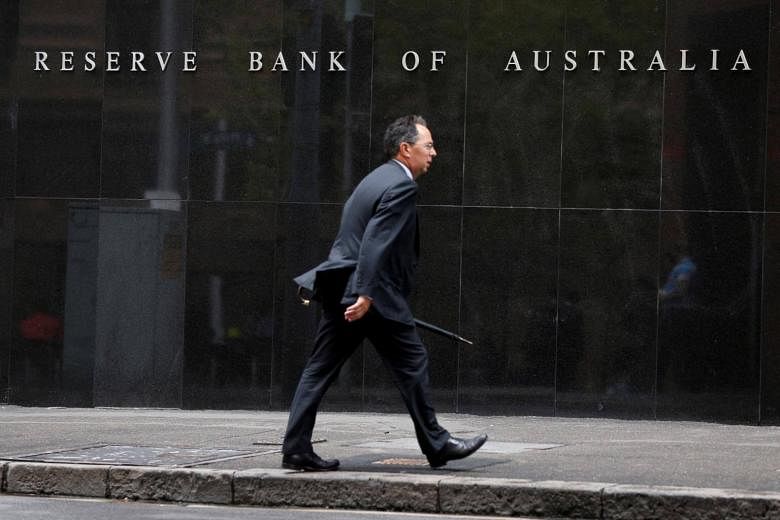SYDNEY (REUTERS) - Australia's central bank is more confident that economic growth will accelerate over the next two years but expects little improvement in unemployment or wage growth, suggesting official interest rates are on hold for some time.
In its 66-page statement on monetary policy on Friday (Aug 4), the Reserve Bank of Australia (RBA) forecast the A$1.7 trillion (S$1.84 trillion) economy will grow "above potential" at around 3 per cent over the next couple of years.
Supporting the RBA's upbeat view, data from the Australian Bureau of Statistics showed retailers enjoyed sales growth of 1.5 per cent in April to June, their best quarter in four years.
That means growth in broader consumer spending almost certainly rebounded from the first quarter's tepid 0.5 per cent.
"Overall this is a significant upside surprise," said Westpac economist Matthew Hassan. "Although the retail survey is a partial measure that does not always map to the quarterly consumption figures in the national accounts, the jump from a flat first quarter to strong second quarter is a clear positive signal."
Adding to evidence domestic consumption picked up, new vehicle sales rose to a record in July for a third straight month.
There are some signs of life in the labour market too.
Since the start of the year, around 165,000 full-time jobs were created while average hours worked and labour force participation have both risen.
Corporate profits are surging while measures of business confidence and conditions are the strongest since 2008.
Encouraging the RBA is a broad-based pick up in global growth since the start of this year, while the price of Australia's single biggest export earner - iron ore - has been climbing, boosting the country's terms of trade.
Indeed, the country has run trade surpluses in seven of the last eight months.
"GDP growth looks to have recovered in the June quarter," the RBA said. "Further out, GDP growth should continue to recover as the drag from falling mining investment comes to an end and the ramp-up in resource exports continues."
Still, the RBA forecast little improvement in unemployment, with the jobless rate seen at just under 5.5 per cent out to the end of 2019 from 5.6 per cent now.
Underemployment - which measures people wanting to work more hours - is already near record highs.
That spare capacity will likely keep wages growth and inflation subdued, especially when households are saddled with a mountain of debt. The household debt-to-income ratio is at a record high 190 per cent and rising faster than incomes.
Core inflation - the main focus for policymakers - is only expected to reach the bottom end of the RBA's long-term target band of 2-3 per cent later this year.
Inflation has remained below target since the start of 2016 and was the single biggest reason for the central bank to cut interest rates to an all-time low of 1.50 per cent last year.
The bank noted utility prices were now set to rise more than first expected over the next few years, adding significantly to headline consumer prices.
The bank also cautioned against further gains in the Australian dollar, which has soared nearly 7 per cent since June to close to 80 US cents.
"Further exchange rate appreciation would tend to generate a slower pick-up in economic activity and inflation than currently forecast," said Lowe.

